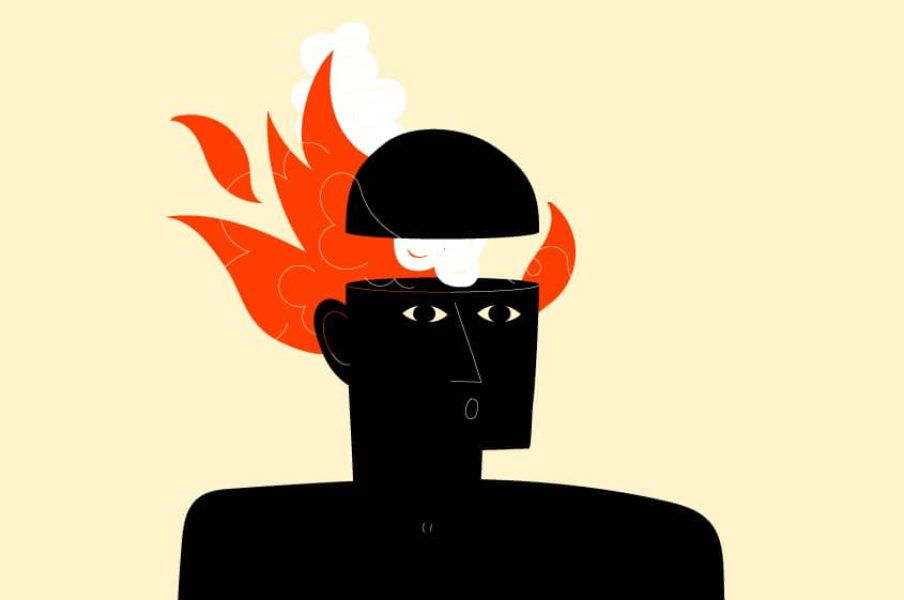Burnout isn’t new to the workplace, but with the turmoil and uncertainty 2020 has brought us, now is an excellent time to look for those indicators that could be plaguing employees. A recent study found that 23% of those in the workforce are experiencing persistent burnout and are 2.6 times more likely to seek a new job.
This puts managers, leaders, and even small business owners in an important role; to recognize the subtle warning signs and manage them before employees begin to look elsewhere.
Signs and Symptoms of Burnout
1. Cynicism and detachment from the job
Withdrawal: Employees may become detached from work. It could manifest as calling in sick, leaving work early, taking extensive breaks, or coming in late. Detachment can be any form of removing themselves mentally or physically from work.
Negativity: A negative mood can range from talking negatively about themselves or complaining about their job. It can intensify into lashing out onto coworkers, managers, or even friends and family.
Depersonalization: Over time, as burnout worsens, employees may care less about their job or even become hostile to others. It can be more apparent for those working in customer service jobs; the client transitions from being a person needing assistance to an annoyance bothering them and wasting their time.
2. Reduced feelings of effectiveness and lack of accomplishments
Reduced Productivity: As expected, individuals who don’t have an interest in tasks or don’t give full attention perform poorly. Less work is done, and work that does get done is not done well. This can look like assignments being turned in late, halfway done, or with many errors.
Inability to cope: The stressors and symptoms can build up and become so overwhelming they can no longer “just breathe” to manage. It becomes more difficult to handle stress until it has wholly engulfed them.
Low morale: The enthusiasm and discipline needed to do the job are depleting. This can be detrimental to a company. It can spread from one employee to two employees, to five employees, until they have almost an entire department down.
3 Types of Burnout
The first type of burnout is overload burnout. Overload burnout is working as hard as you can intending to succeed. Working hard to succeed sounds good, but in this case, it is taking it to the extreme, to the point where you are so motivated to achieve that you are risking your mental and physical health. Individuals who suffer from this type of burnout tend to cope by complaining to others, particularly about their business hierarchy.
The second type of burnout is boredom burnout. This type can also be referred to as “under-challenged burnout.” People in this category become burnt out due to a lack of learning and growth. They feel underappreciated as they think their job is not valuing the skills they possess and can perform well. These individuals lose passion for their job and tend to cope with this type of burnout by distancing themselves from their job.
The third type of burnout is worn-out burnout, or also known as neglect burnout. These individuals experience emotional exhaustion and tend to feel helpless at work. They want to succeed at their job, but they lack the motivation to do so. They are unable to keep up with their workload. These individuals tend to be passive and not motivated enough to care to keep up with the workload.
Manage Burnout With Work-Life Balance
A common misconception of burnout within businesses is the expectation for symptoms to be solved by employees getting therapy or handling the stress with relaxation techniques. However, businesses that recognize burnout can be absolved most effectively through employee-manager collaboration. Businesses will find higher rates of job satisfaction and task accomplishments throughout their company. We know burnout occurs when job demands outweigh an individual’s ability to cope with stress, so we must find effective ways to manage the stress or stop it before it even starts.
Plan Projects with Real Goals: As a business owner or a manager, you are more likely to see better results by planning projects for your team with realistic, real-world goals. A realistic goal can keep employees from feeling overwhelmed and overworked.
Understand poor management: The heads of a company set the tone for those employees working for them. Management needs to lead by example and create a positive, healthy work environment for their employees. This will keep morale high, thus productivity high. Lack of recognition of employees, facilitating poor communication, and instilling fear in employees are factors of a toxic work environment that are risks for burnout and poor mental health.
Estimate effort to calculate reward: By having rewards set that match the effort put into the work, employees are more likely to be motivated to work harder and more effectively. An effort/reward imbalance is a significant risk factor for burnout. It can leave employees feeling overworked and cause them to become unmotivated as the perceived reward is impossible or not worth the effort.
In the current state of the world, people are already stressed as it is. Understand your role as a leader or manager in the workplace, and take care of your company’s mental health.
Like what we have to say? Sign up to subscribe to email alerts and you’ll never miss a post.










